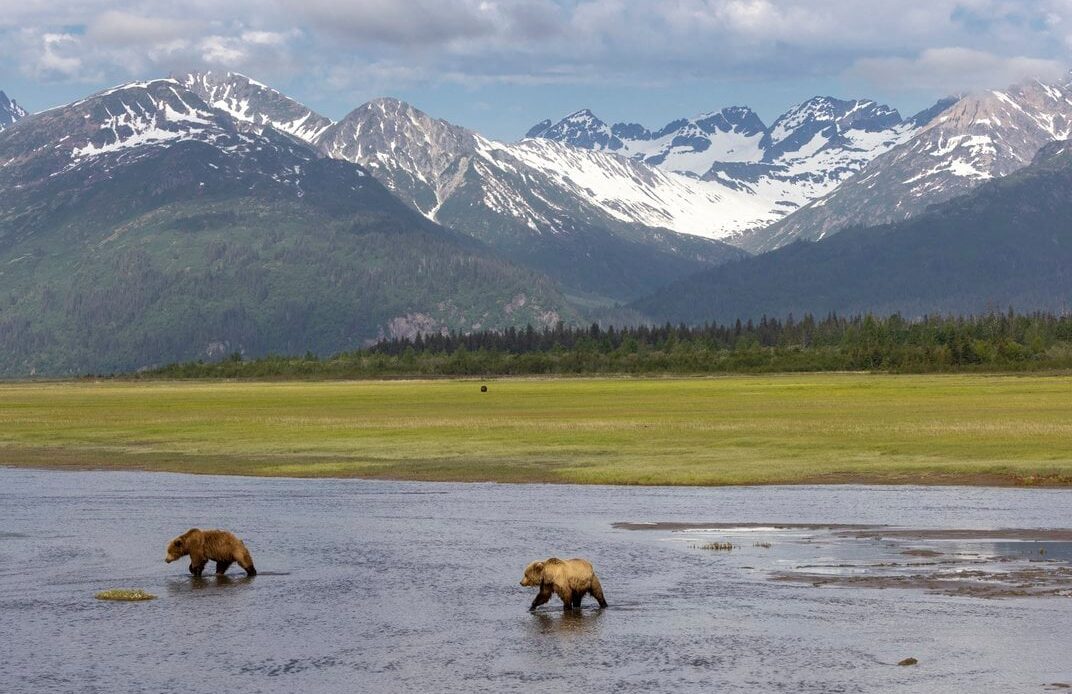Looking down from the two-story viewing stand, I scanned the meadow below and started counting brown bears. When I hit 12, I turned to our guide, curious as to what the record was for bears spotted at one time in this very spot. I was stunned to hear the number was more than 70.
It was early June, and I was in Alaska’s Lake Clark National Park and Preserve, located about 120 “air miles” southwest of Anchorage just across Cook Inlet from the Kenai Peninsula. With more than four million acres, the park has three National Wild Rivers, the Chilikadrotna, Mulchatna and Tlikakila, coursing through its expanse; two active volcanoes, Redoubt and Iliamna, designated as National Natural Landmarks; and a brown bear population so dense that researchers once recorded seeing 219 bears when surveying a 54-square-mile coastal area.
According to the National Park Service, 95 percent of U.S. brown bears live in Alaska. Lake Clark National Park has both coastal and inland brown bears of the species Ursus arctos horribilis. The coastal bears are generally larger, since they have an abundance of food like sedges and salmon. By the time they den up each fall, males can weigh more than 1,000 pounds, with females generally around two-thirds of their size. Inland brown bears, often called “grizzlies,” generally eat a different diet largely consisting of ground squirrels, plant roots, berries, insects and fish from rivers and lakes, and they are typically smaller than coastal brown bears.
Lake Clark National Park has both coastal and inland brown bears of the species Ursus arctos horribilis.
Court Whelan/Natural Habitat Adventures
No roads exist in the park, so visitors arrive primarily via private aviation, with a number of air taxi services available. Boats can also access the park, though rough waters make this option less popular.
“Getting [to the park] is complicated,” says Buck Mangipane, Lake Clark National Park’s natural resource program manager. “You’re dealing with tides and weather, so it is not the easiest place to visit, but people certainly do have success getting out there, and coming out to see the bears, and fish, and…
Click Here to Read the Full Original Article at Travel | smithsonianmag.com…
